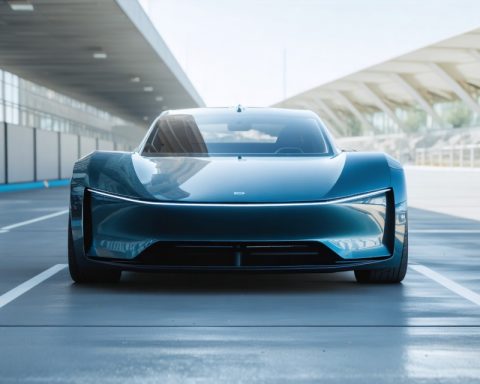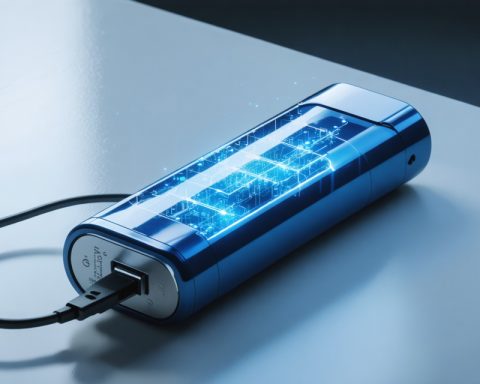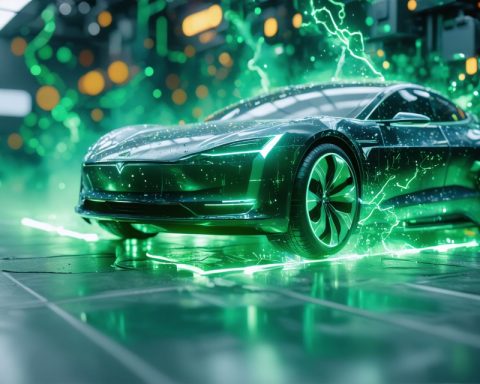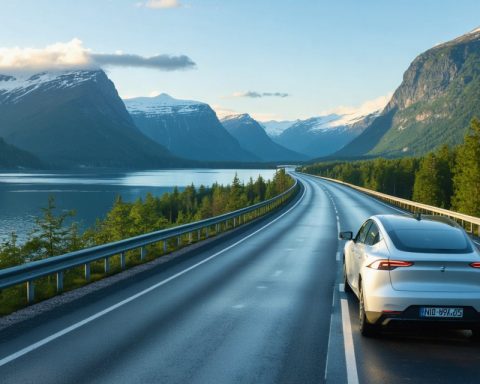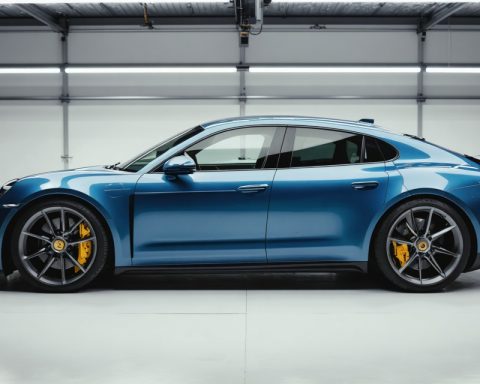- Electric vehicles (EVs) are transforming urban delivery services, offering a sustainable solution with zero tailpipe emissions.
- Growing pressure from consumers and regulations, such as London’s ULEZ and California’s clean air initiatives, drive the shift to EVs in urban logistics.
- Modern electric delivery vans, like Ford’s Transit and Mercedes-Benz’s electric Sprinter, deliver strong range capabilities and performance.
- Benefits of EVs include reduced fuel and maintenance costs, bolstered by advanced telematics and fleet management software.
- Adopting EVs reduces urban noise and air pollution, aligning with sustainability goals and improving the quality of city life.
- Electric fleets by companies like Amazon and DHL set industry standards, emphasizing the role of sustainability in driving innovation.
- The shift to electric delivery vehicles is not just a trend but a necessary evolution for future-ready businesses.
Electric vehicles (EVs) are transforming urban landscapes, particularly in how goods are delivered across bustling cities. These eco-friendly vehicles glide silently through congested streets, offering a promising solution to the growing demand for sustainable delivery services.
Picture this: the sun barely peeks over the horizon, yet the city pulses with early morning activity. Delivery vans, a familiar sight, now sport sleek designs and a distinct lack of engine noise. These are not just any delivery vehicles—they’re electric.
A prime driver of this shift is the increasing pressure from both consumers and regulators to reduce the carbon footprint of delivery operations. Traditional delivery vehicles, primarily powered by diesel, contribute significantly to urban pollution. In contrast, EVs offer a cleaner alternative, emitting no tailpipe emissions and significantly lowering overall greenhouse gas emissions when powered by renewable energy.
Moreover, major cities globally face stringent vehicular regulations intended to curb air pollution. From London’s Ultra Low Emission Zone (ULEZ) to California’s ambitious clean air initiatives, policies incentivize the adoption of EVs for urban logistics. As regulatory environments become more restrictive, delivery companies find EVs not just beneficial but necessary.
Performance and innovation amplify these advantages. Modern electric delivery vans boast impressive range capabilities, often exceeding 150 miles per charge. This range is more than sufficient for daily urban routes. Additionally, the development of fast-charging infrastructure ensures minimal downtime. While a quick pit stop energizes the batteries, the logistics continue smoothly, keeping businesses on track.
Take, for instance, the electric models from industry leaders like Ford and Mercedes-Benz. The all-electric Transit from Ford delivers not only on range but also payload capacity. Meanwhile, Mercedes-Benz’s electric Sprinter seamlessly combines sustainability with the robust reliability known in its traditional fleet. The focus on durable battery life and regenerative braking systems enhances efficiency, crucial for stop-and-go traffic scenarios.
Financially, electric vans present an enticing proposition. Reduced fuel costs and lower maintenance needs offer long-term savings, offsetting the initial purchase expense. Cutting-edge telematics and fleet management software further streamline operations, providing insights into electric fleet performance and optimizing routes for energy efficiency.
As logistics giants and newcomers alike embrace these innovations, the urban delivery scene buzzes with potential. Companies such as Amazon and DHL are pioneering fleets of electric vans, setting industry standards and encouraging widespread adoption.
The rise of EVs in urban delivery heralds a cleaner, quieter, and more efficient future. This shift not only aligns with sustainability goals but also enhances the quality of urban life by reducing noise and air pollution. Cities become more livable and delivery services more sustainable—the perfect blend of progress and responsibility.
The electrification of urban delivery fleets underscores a vital takeaway: sustainability drives innovation. Embracing electric vehicles for urban logistics is more than a trend—it’s the path forward, where businesses can thrive while nurturing the planet. Prepare to see, and hear, the difference as electric delivery vehicles become commonplace on city streets, quietly yet powerfully charging ahead.
Why Electric Vans Are Revolutionizing Urban Deliveries
The Current EV Landscape and Usage Benefits
Environmental Advantages: Electric vehicles (EVs) contribute substantially to reducing urban pollution. With zero tailpipe emissions, EVs help decrease not only carbon dioxide but also nitrogen oxides and particulate matter, which are harmful pollutants in city environments.
Regulatory Influence: Cities around the world are setting stringent emissions targets. For example, London’s Ultra Low Emission Zone (ULEZ) has demonstrated significant improvement in air quality by encouraging the use of low-emission and electric vehicles. California has implemented robust clean air initiatives that incentivize EV adoption.
Cost and Operational Efficiency
Cost Analysis: Despite higher upfront costs for EVs, the total cost of ownership often declines over time. Savings come from reduced fuel expenses and lower maintenance needs—a key selling point for fleet operators. Studies suggest that maintenance costs for EVs can be 20% lower compared to traditional vehicles due to fewer moving parts.
Operational Insights: The use of advanced telematics and fleet management technologies can optimize routes, reducing energy usage and enabling more efficient time management. For instance, systems by companies like Geotab provide real-time insights into vehicle performance and energy consumption.
Infrastructure and Adoption Challenges
Charging Infrastructure: The growing network of fast-charging stations addresses range anxiety, a primary concern for many potential EV users. Initiatives from companies like ChargePoint and Tesla’s Supercharger network have set the groundwork for widespread EV adoption.
Adoption Barriers: Factors such as initial cost, charging time, and availability need addressing. However, government incentives, such as tax credits and rebates, aim to make EVs more accessible to businesses.
Real-World Use Cases
Innovative Fleets: Companies like Amazon and DHL demonstrate how integrating EVs into delivery fleets can reduce environmental impact while maintaining efficiency. Amazon’s “The Climate Pledge” plan includes deploying 100,000 electric delivery vans by 2030.
Technical Specifications and Innovations
Performance Metrics: Vehicles like Ford’s all-electric Transit offer over 150 miles per charge, with payload capacities comparable to their diesel counterparts. Mercedes-Benz’s electric Sprinter pairs strong reliability with sustainability.
Technology Integration: Features such as regenerative braking help enhance efficiency. They convert kinetic energy from braking back into stored energy, extending battery life.
Controversies and Limitations
Limitations: While EVs are excellent for urban use, their application in rural or extended travel routes may not yet be viable due to limited charging infrastructure and battery range.
Industry Trends and Market Predictions
Market Growth: Analysts predict that the market for electric commercial vehicles will grow substantially over the next decade. The push for sustainability paired with technological advancements in EVs is expected to drive this trend.
Innovation Roadmap: Future EV models are anticipated to feature enhanced battery technology, longer ranges, and improved charging speeds, making them more attractive to businesses.
Actionable Recommendations
1. Evaluate Fleet Needs: Urban delivery businesses should assess their specific delivery routes and operational demands before transitioning to electric vans.
2. Leverage Incentives: Take advantage of available government incentives and rebates to offset upfront costs.
3. Invest in Technology: Deploy telematics solutions to monitor fleet performance and optimize efficiency.
4. Plan Charging Strategies: Integrate charging infrastructure planning into logistics to minimize downtime and disruptions.
For more insights and updates on electrification and sustainability, visit CleanTechnica to explore expert opinions and the latest EV developments.
In conclusion, the shift to electric vehicles in urban logistics is not only environmentally beneficial but also financially prudent. Embracing this transition facilitates cleaner cities and sustainable business practices, ensuring urban environments remain vibrant and healthy for future generations.

